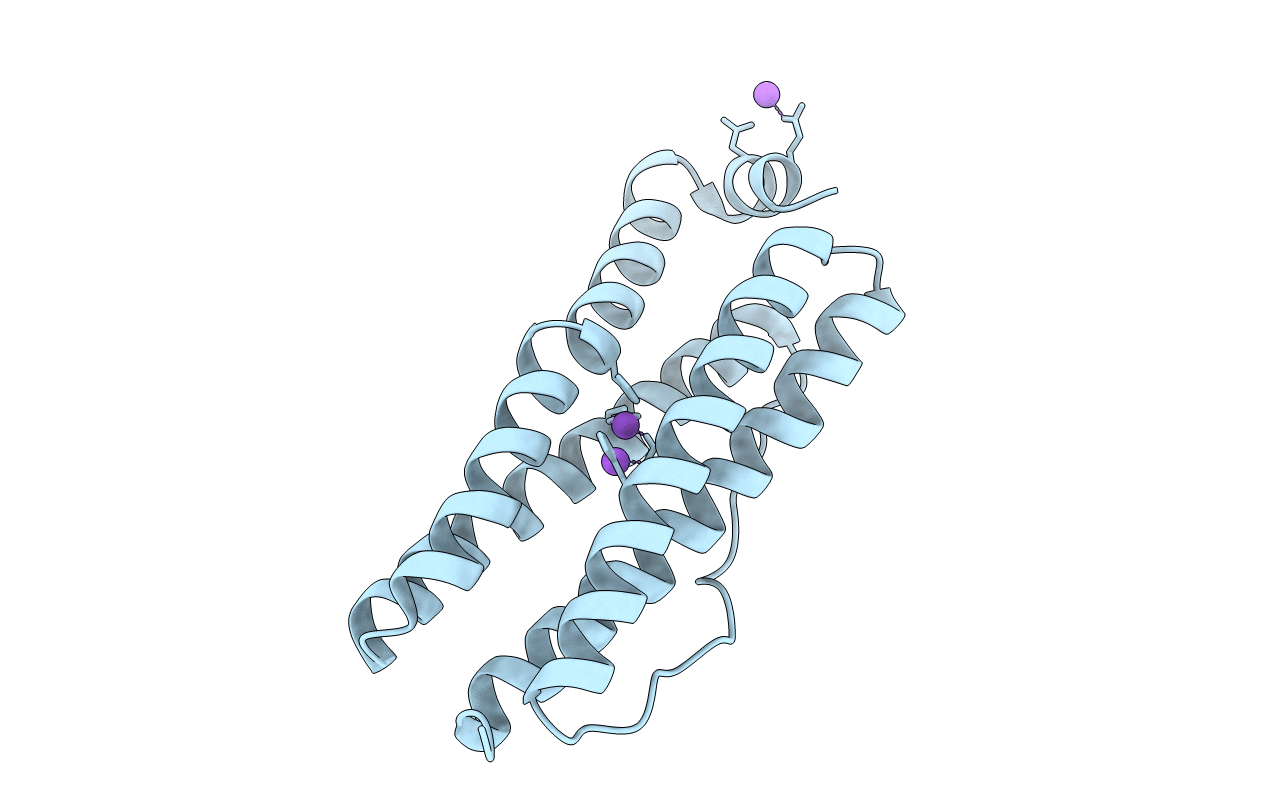
Deposition Date
2011-03-14
Release Date
2011-05-25
Last Version Date
2023-09-13
Entry Detail
PDB ID:
3R2K
Keywords:
Title:
1.55A resolution structure of As-Isolated FtnA from Pseudomonas aeruginosa (pH 7.5)
Biological Source:
Source Organism:
Pseudomonas aeruginosa (Taxon ID: 287)
Host Organism:
Method Details:
Experimental Method:
Resolution:
1.55 Å
R-Value Free:
0.20
R-Value Work:
0.18
R-Value Observed:
0.18
Space Group:
F 4 3 2


